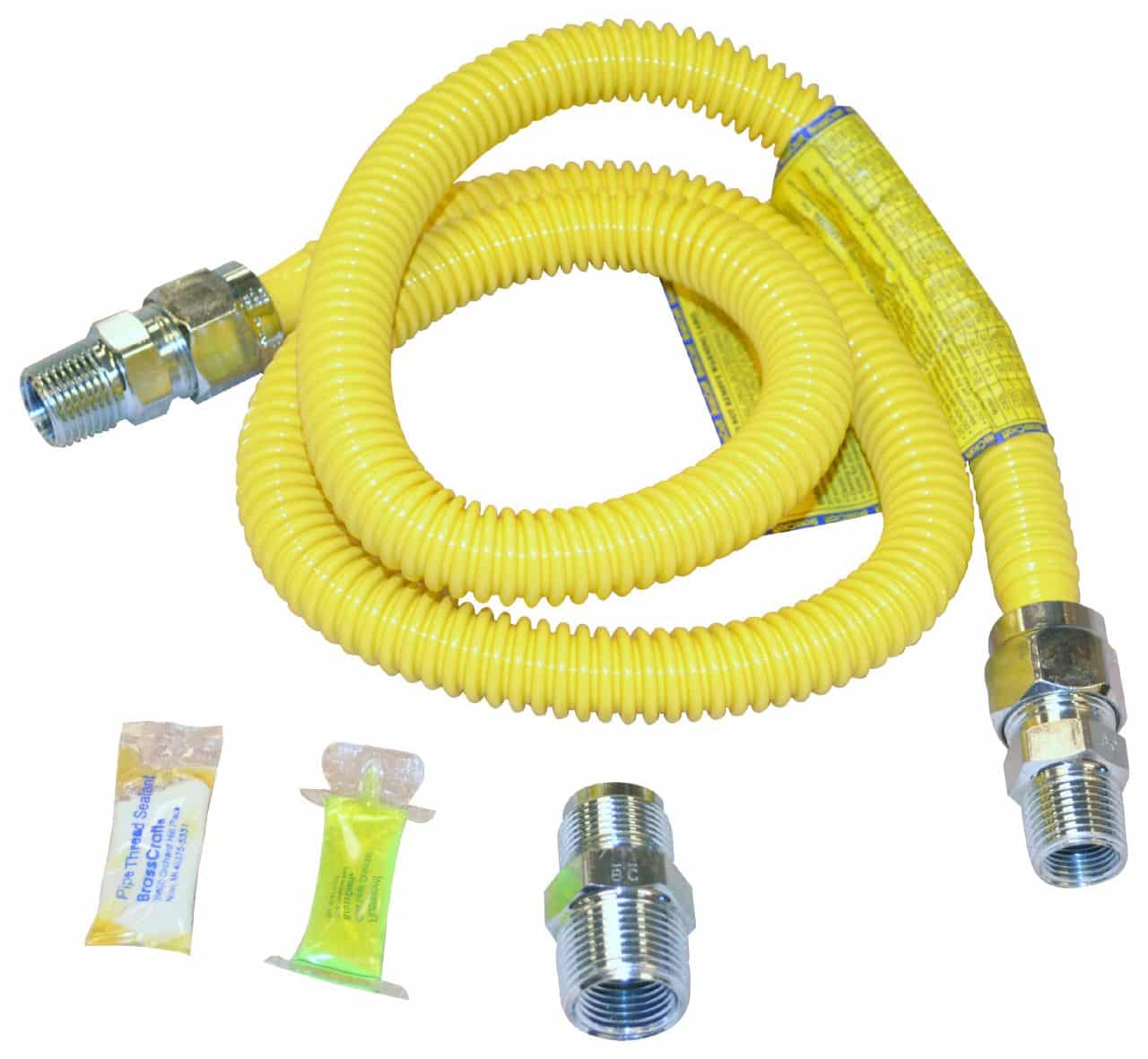
National Fire Protection Association reports indicate that clothes dryers and ranges collectively account for the majority of home fires in America. Why are these two appliances often to blame? In some cases, it’s faulty installation. Many Americans incorrectly assume that all gas flex lines are the same. As such, they use the wrong ones when installing their homes’ appliances. So this week, in the interest of safety, we wanted to discuss dryer vs. range gas lines.
Before we get to the differences in appliances, it’s best to start with a look at two of the most common types of flexible gas lines. If you were to look behind a dryer or range, chances are you’d see a flexible line running from the back of the appliance to a fitting. From the fitting, the flexible line likely connects to another. One is probably a piece of corrugated, stainless steel tubing.
Get to Know CSST
Also known as CSST, it is frequently used to run gas from the outside of a home to the interior. However, it may also be used to run gas lines through a home’s interior walls, basements and other enclosed areas. CSST tends to come in various lengths and diameters. Plus, they feature color-coded sheathing which may become damaged in certain situations.
Accordingly, they are often installed with supports that hold the longest sections of pipe in place. The supports help prevent breaks in connections as well as the pipe. Nonetheless, such damage may still occur over time, as the home settles or falls into disrepair for whatever reason. So therefore, even when CSST is in place, homeowners should consider installing combustible gas detectors for safety sake.
But we digress. Although it looks similar to other flexible pipes, CSST is not meant to run directly to a home’s appliance because of those features we just mentioned. Instead, it must be attached to a FAC, which is also known as a flexible appliance connector.
Introducing FACs
Flexible appliance connectors tend to be shorter, narrower and less rigid than their CSST cousins. They also typically boast factory-installed fittings and may or may not feature specialty sheathing. Those design features make them ideal for connecting appliances to main gas lines because let’s face it, people move appliances during routine maintenance or house cleaning.
Consequently, the pipes must be able to handle those movements without breaking or kinking. Why kinking? Simply put, the unnatural bends will disrupt the flow of gas and put unnecessary pressure on the pipes, which could eventually cause breakage. Also, remember that the exteriors of clothes dryers and ranges may get hot or wet during normal use. They could also come into contact with household cleansers that in turn, could damage the flexible pipes’ sheathing. As such, some stretches of flexible pipe come without rubber or degradable coatings. Instead, they’re treated with paints meant to protect them from scratches and rust.
Fittings and Final Observations
Furthermore, as we touched upon before, flexible gas pipes come with different fittings. Clothes dryer installation requires one type of fitting and gas range installations demand another. Consequently, the fittings are meant to match the CSST and FAC used in the respective appliances’ designated installations. Failure to choose the right one could create gaps that allow gas to escape into the home, thereby creating a fire hazard.
So, what are the differences between gas flex lines for clothes dryer and ranges? As we’ve indirectly pointed out, the answer lies in the CSST, FAC and fittings required for each appliance’s installation. To learn more about those differences and determine if your home’s gas appliances are connected to the main line properly, please contact Fred’s Appliance for a meeting today.

How to Fix the nF Error Code on a Samsung Washer

Kenmore Elite Dryer Issues: How To Troubleshoot

Microwave vs. Oven: Pros and Cons and How They Differ

Self-Cleaning Oven Smell: Causes & Odor Reduction Tips

Frigidaire Ice Maker Not Working? 7 Ways to Fix It

Why Is Your LG Refrigerator Not Cooling? (9 Common Reasons)

GE Oven F2 Error: Causes & Solutions

How to Reset the Water Filter Light on a Samsung Refrigerator

Maytag Washer Showing F5 Error Code? Here’s What To Do






